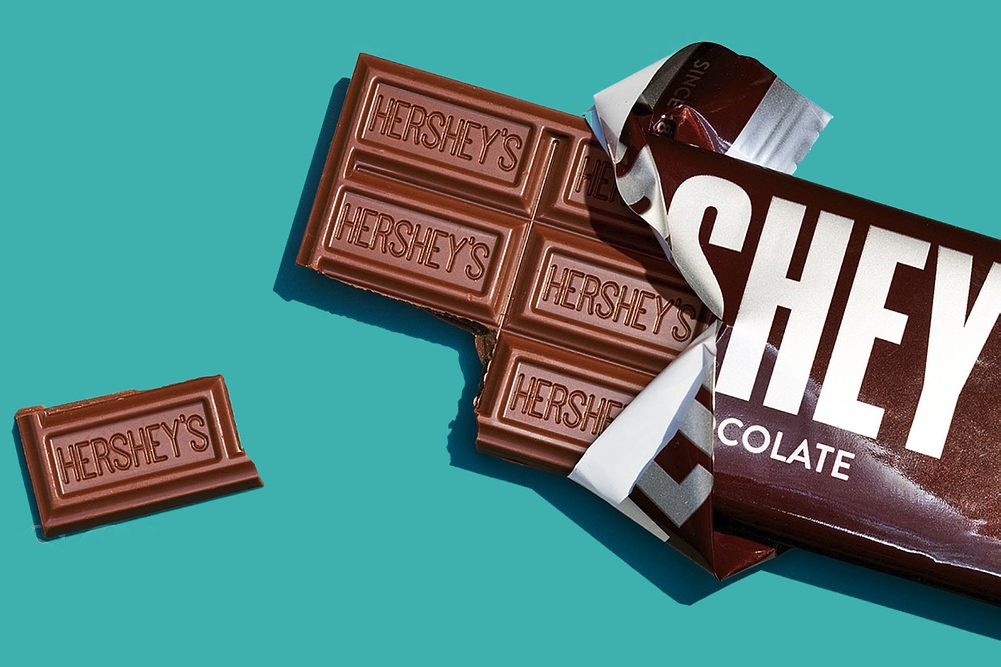HERSHEY, PA. – The Hershey Co.’s second quarter of fiscal 2020 was impacted by the coronavirus (COVID-19). Stay-at-home orders in the United States and around the world limited consumer mobility and sales opportunities. But during a conference call with analysts on July 23, company management expressed optimism about the second half of the fiscal year, even one that may feature a socially distanced Halloween.
Net income for the quarter ended June 28 was $269 million, equal to $1.33 per share on the common stock, and a decline when compared with the second quarter of fiscal 2019 when the company earned $313 million, equal to $1.54 per share.
Sales for the quarter fell 3% to $1.7 billion.
Sales in the company’s North America business unit, its largest, rose 1% to $1.6 billion.
“Despite new challenges and increased complexities, we delivered profitable category-leading sales growth in North America,” said Michele G. Buck, chairman, president and chief executive officer. “These gains were offset by sales declines in areas heavily impacted by the pandemic and related government restrictions and consumer mobility limitations.
“While take-home products are driving outsized growth, instant consumable products are also growing. Hershey has outperformed the category with sales growth across brands that accelerated as we progressed through the quarter. In June, Hershey’s chocolate portfolio grew 13%, with Reese’s, Hershey’s and Kit Kat brands each growing 14%. Key brands, such as Payday, York, Almond Joy, Mounds, Heath and Rolo, also all grew during the month, resulting in a combined growth rate of over 11%.”
While North American consumers were bringing more treats home during the quarter, it turns out social distancing is not good for breath fresheners. The category continued to decline during the month of June, with sales down 20% to 25%, Ms. Buck said.
“Our business has trended relatively in line with the category,” she said. “We expect category trends to remain challenged until social distancing guidelines relax.”
A bright spot for Hershey was its baking ingredients platform, which includes syrups, baking chips, toppings and cocoa. Sales rose 40% during the quarter as consumers spent more time at home.
“We have capitalized on this trend to sustain momentum increasing marketing spend and generating more content and recipes for our consumers,” Ms. Buck said. “This is important for the second half of the year when baking takes on an even bigger role in US households.”
Sales in Hershey’s International and Other business unit fell 38% to $124 million. Key markets impacted the most included Mexico, India and Brazil.
“In many of these markets, chocolate consumption is not as embedded in the culture as it is in the United States and it is premium priced versus other food and snacking options,” Ms. Buck said. “Category trends did improve as the quarter progressed, but they remain below prior-year levels.”
Management declined to offer guidance for the rest of the fiscal year, but Steven E. Voskuil, chief financial officer, said in North America that the company expects sales growth to accelerate in the second half, driven by elevated home consumption, price realization and replenishment of retailer and distributor inventory levels.
“The company does not currently expect seasonal performance to have a material impact on second-half financial results, though the impact of a resurgence of COVID-19 cases on consumer participation in seasonal activities remains uncertain,” he said.
His comments were notable given that Halloween is Hershey’s largest seasonal event and represents approximately 10% of annual sales, and much uncertainty surrounds how Oct. 31 may play out in the midst of a pandemic.
“Nearly 50% of Halloween candy spend is on treat for me and candy bowl occasions, which start early in the season,” Ms. Buck said. “Trick-or-treating represents the other 50% of the season with sales concentrated in the last two weeks of October.
“While research indicates trick-or-treating participation will likely be below prior-year levels due to COVID-19 concerns, the expectation of this holiday tradition has been consistently improving over the past several weeks. We expect to outperform the category, given our iconic brands, strong innovation and merchandising and great execution.”
Ms. Buck’s optimism is fueled by retailer orders that began back in May.
“We will continue to monitor consumer behavior and local guidelines and partner with our retailers to help consumers celebrate the season of Halloween during this uncertain time,” she said.





